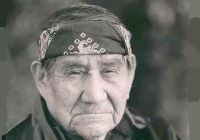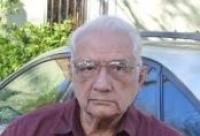“Overlooking Nazlini” by Tony Begay is an oil painting on stretched canvas. The 16” x 20” original painting of a Navajo horse and rider has an outer frame size of 18” x 22”.
Navajo artist Tony Begay was born in Ganado, Arizona on the Navajo Reservation in 1941 and died in an accident in 1973. He was a graduate of the American School of Commercial Art in Dallas, Texas.
Notes from Clara Lee Tanner, 1973: “Begay was not only respected for his artwork but was popular with his peers. After his funeral, members of several different tribes gathered art works to sell in order to establish a fund in order to establish a fund in his honor and for his children. Unbelievable are the numbers of individuals from additional tribes who have joined in this tribute to a beloved Indian artist.”
Call for shipping
About the artist
Tony Begay
Tony Begay was born in 1941 in Ganado, Arizona on the Navajo Reservation. Tony, who resided in Chinle, was the son of Lucy Tanesini and Seth Begay.
He was a graduate of the American School of Commercial Art in Dallas, Texas. Begay served in the U.S. Marine Corps from 1962 to 1966, during which time he was commissioned to paint murals at the officer’s clubs at Camp Horno and Camp Pendleton, California.
His first one-man show was at the Heard Museum in Phoenix, Arizona in 1970. His paintings are included in the Woodard Collection, the Navajo Nation Tribal Museum, and various private collections. Begay exhibited at the Eiteljorg Museum, the Philbrook Art Center, the Museum of Northern Arizona, the Gallup Inter-Tribal Indian Ceremonials and at the Navajo Tribal Fair. He received awards for his paintings at the Gallup Inter-Tribal Indian Ceremonial, at the Navajo Tribal Fair and at the Scottsdale National Indian Art Exhibit.
Tony Begay's life was cut short in an unfortunate accident in 1973.
Clara Lee Tanner stated:
“Tony Begay was proficient in all of the styles in which he painted. His brushwork is clean, his colors rich; in graphics he proved equally capable, whether handling pen and ink or charcoal.”
“Begay was not only respected for his art work but was popular with his peers. After his funeral, members of several different tribes gathered art works to sell in order to establish a funding his honor and for his children. Unbelievable are the number of individuals from additional tribes who have joined in this tribute to a beloved Indian artist. Tanner 1973”













